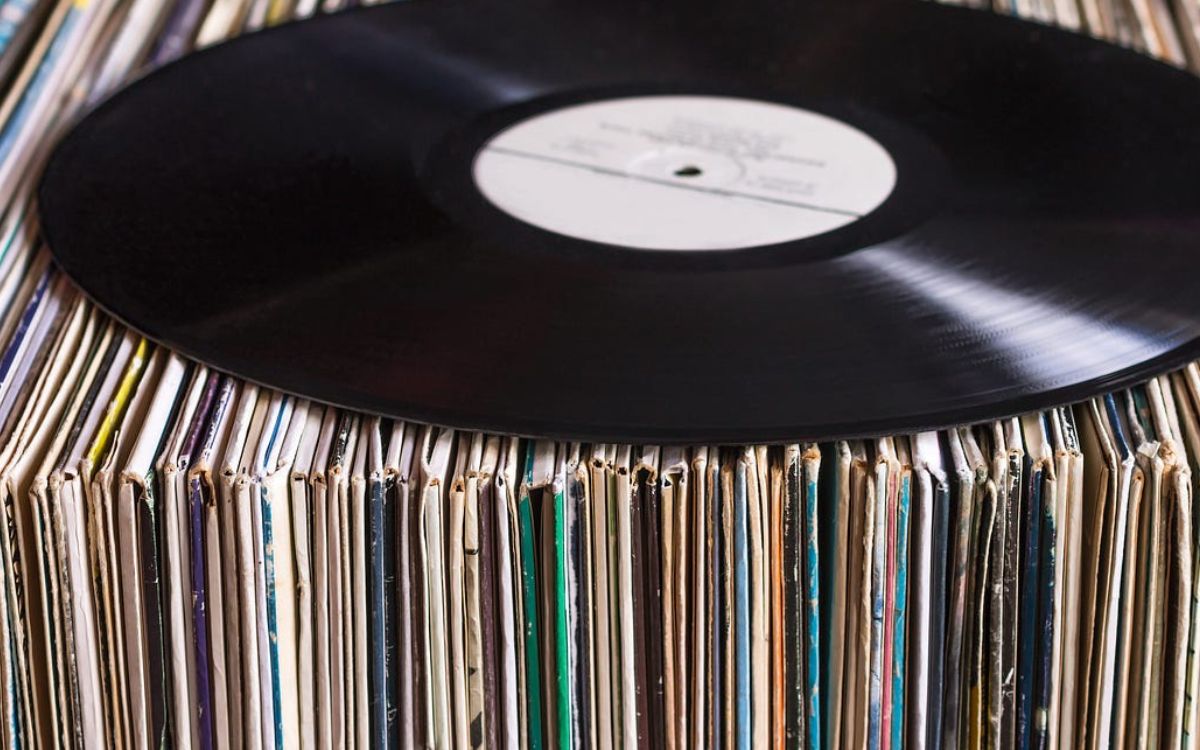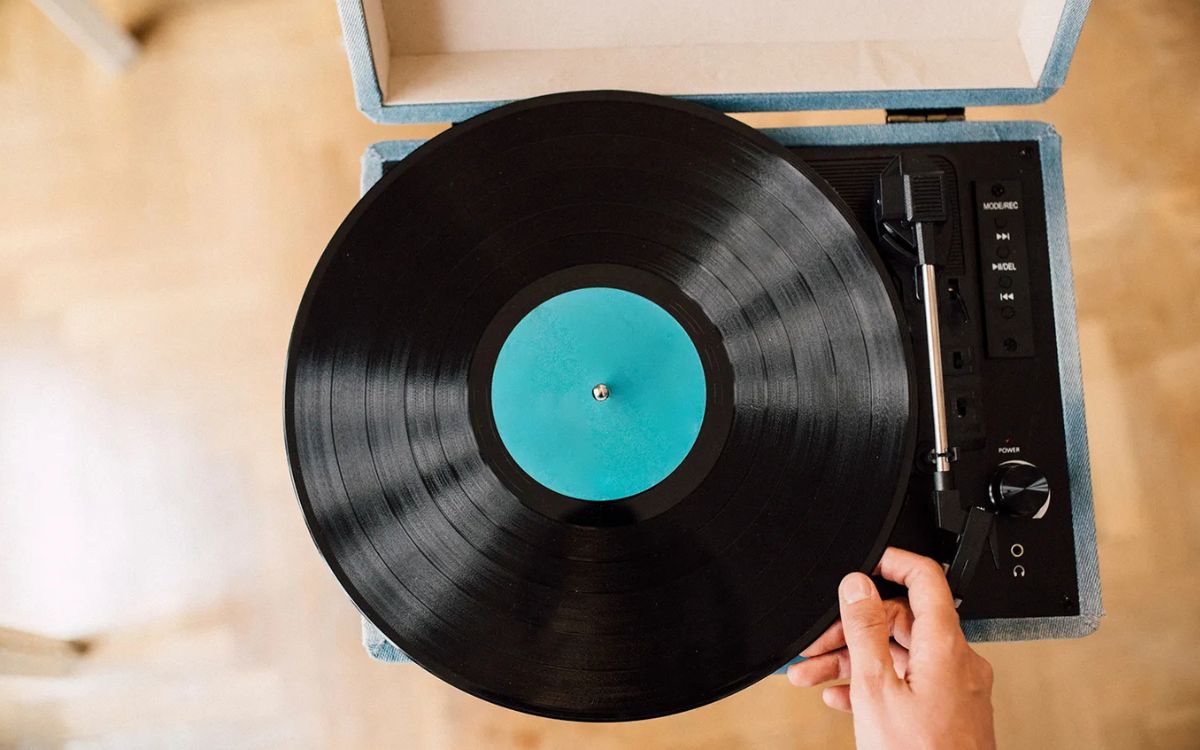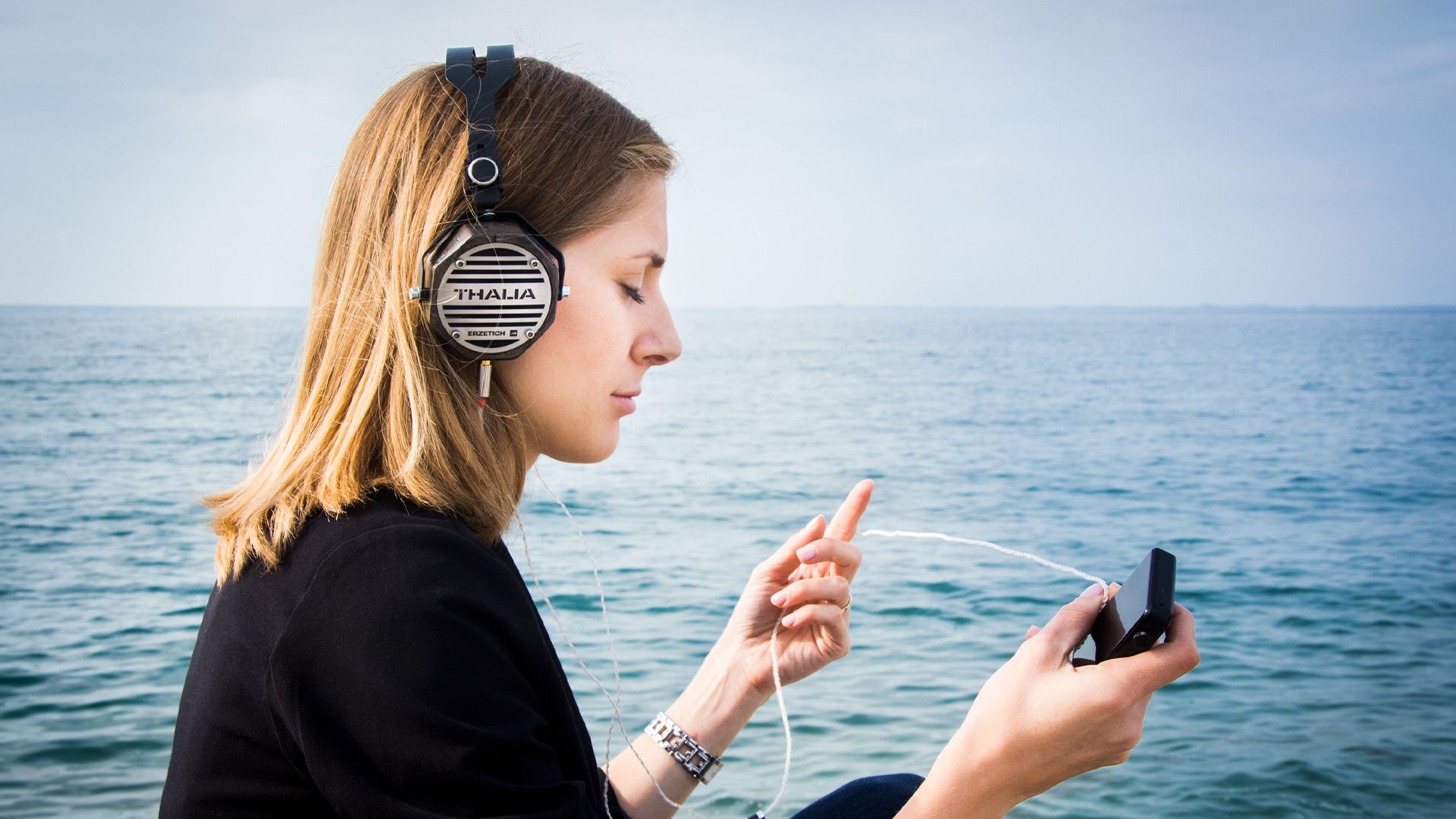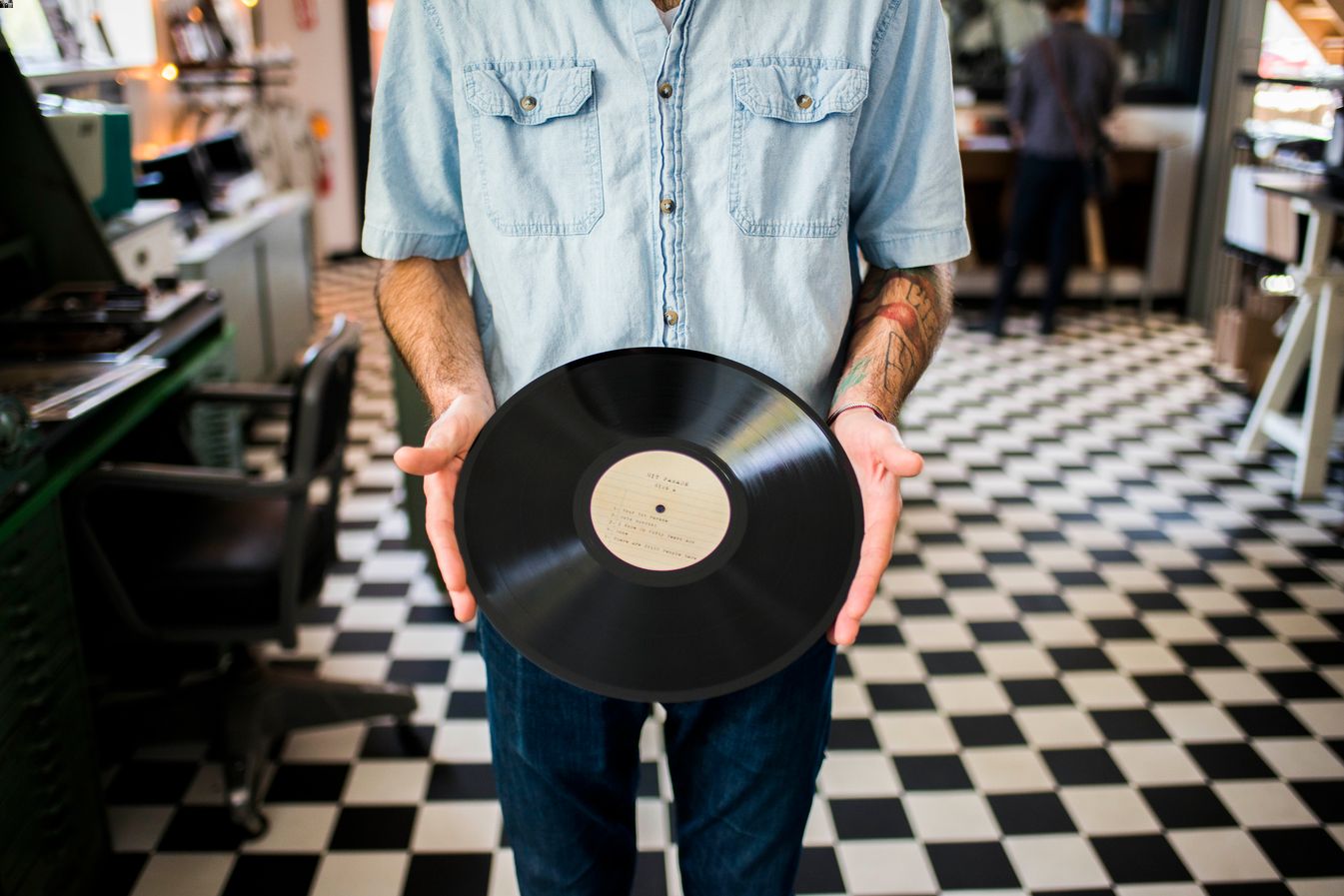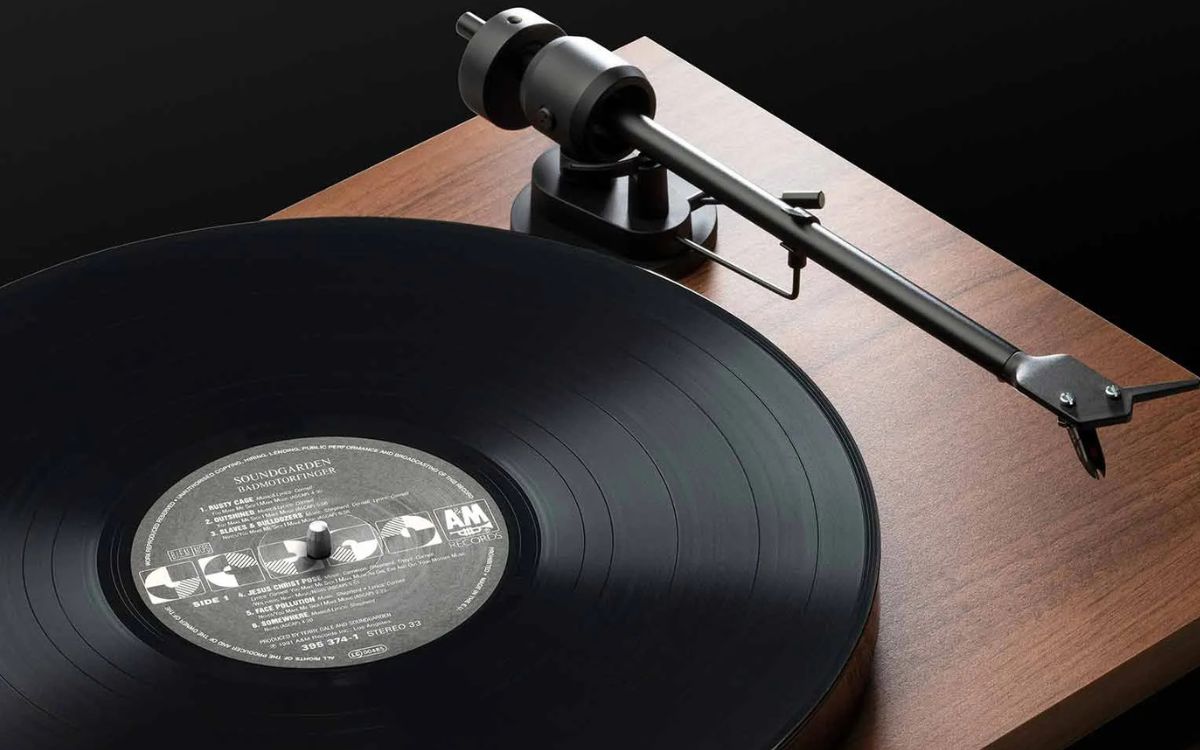Home>Production & Technology>Vinyl>How Vinyl Records Affect The Way We Listen To Music


Vinyl
How Vinyl Records Affect The Way We Listen To Music
Published: December 9, 2023
Discover how vinyl records have revolutionized the way we experience music, offering a unique and immersive listening experience that captures the true essence of each song. Explore the magic of vinyl today!
(Many of the links in this article redirect to a specific reviewed product. Your purchase of these products through affiliate links helps to generate commission for AudioLover.com, at no extra cost. Learn more)
Table of Contents
- Introduction
- The Rise and Fall of Vinyl Records
- The Resurgence of Vinyl Records
- The Unique Listening Experience of Vinyl Records
- The Impact on Music Appreciation
- The Vinyl Revival and Music Consumption Trends
- The Psychological Effects of Vinyl Records
- Vinyl Records and Nostalgia
- The Collectability and Artistic Appeal of Vinyl Records
- Conclusion
Introduction
Vinyl records have had a significant impact on the way we listen to music and have played a pivotal role in shaping the music industry for decades. With their distinctive sound quality and tactile experience, vinyl records have captured the hearts of music enthusiasts around the world.
While the popularity of vinyl records has waxed and waned over the years, they have recently experienced a remarkable resurgence in the digital age. In a world dominated by streaming services and digital downloads, the allure of vinyl records has prompted new generations of music lovers to embrace this analog format.
What makes vinyl records so special? It’s not just the warmth and depth of the sound they produce; it’s also the ritualistic nature of playing a record. From carefully selecting an album and removing it from its sleeve to carefully placing the needle in the groove, there is a sense of connection and intimacy that digital music simply cannot replicate.
In this article, we will explore the unique listening experience of vinyl records and how they have influenced the way we appreciate and consume music. We will also delve into the psychological effects of vinyl records, their connection to nostalgia, and their collectability and artistic appeal.
Whether you are a seasoned vinyl collector or simply curious about the vinyl resurgence, join us as we delve into the world of vinyl records and uncover their enduring impact on music culture.
The Rise and Fall of Vinyl Records
Vinyl records first emerged as a commercial audio format in the early 20th century and quickly gained popularity. At its peak in the 1970s and 1980s, vinyl records were the dominant medium for music consumption, offering a tangible and immersive listening experience.
During this time, vinyl records were not just a means of listening to music; they were symbols of identity and self-expression. Album artwork, liner notes, and lyric sheets became an integral part of the music experience, allowing fans to connect with their favorite artists on a deeper level.
However, with the advent of new technologies, such as cassette tapes and later CDs, vinyl records gradually lost their dominance in the music market. The convenience of portable cassette players and the digital clarity of CDs enticed consumers away from vinyl.
By the late 1990s, vinyl records were considered a niche format, mostly favored by audiophiles and collectors. Many record stores closed their doors, and production of vinyl records decreased significantly.
Despite their decline, vinyl records never truly disappeared. Dedicated fans continued to seek out and cherish vinyl records, and a small underground market for vinyl existed throughout the digital age.
However, it wasn’t until the early 2000s that vinyl records began to experience a resurgence in popularity. Partly driven by a longing for a more tactile and authentic music experience in the digital age, vinyl started to regain its allure.
Independent artists and labels played a crucial role in the resurgence of vinyl, often releasing limited edition records with unique artwork and packaging. This helped create a sense of exclusivity and collectability that appealed to music enthusiasts.
Furthermore, the rise of music streaming services and the decline of physical sales led to a renewed interest in vinyl records. Listeners sought out a physical format that offered a more intimate and intentional way of engaging with music.
Today, vinyl records continue to grow in popularity, with major artists and labels releasing new albums and reissues on vinyl. Record store culture has made a comeback, and vinyl fairs and record swaps attract avid collectors from all walks of life.
As we explore the renewed interest in vinyl records, it’s clear that their rise and fall was not just a reflection of technological advancements but also a testament to the enduring appeal of a format that resonates with our desire for connection and nostalgia.
The Resurgence of Vinyl Records
In the midst of the digital era, where music is predominantly consumed through streaming platforms and digital downloads, the resurgence of vinyl records has taken the music world by storm. Vinyl records, once thought to be a relic of the past, have experienced a remarkable comeback in recent years.
One of the driving forces behind the revival of vinyl records is the desire for a tangible and authentic music experience. In a world dominated by digital files, there is something special about holding a vinyl record in your hands, admiring the artwork, and carefully placing the needle on the grooves.
Additionally, vinyl offers a unique sound quality that is distinct from digital formats. The warmth and richness of the sound produced by vinyl records have an almost nostalgic appeal, adding depth and character to the music that audiophiles and casual listeners alike appreciate.
The resurgence of vinyl records can also be attributed to the growing popularity of collecting and owning physical music. Vinyl records are more than just a medium for listening to music; they are cherished artifacts that hold sentimental value and reflect personal taste.
Record stores, once on the brink of extinction, have experienced a renaissance as vinyl sales have increased. These stores not only provide a wide range of new and used vinyl records but also serve as community spaces for music lovers to connect and explore their shared passion.
Furthermore, the limited availability and exclusivity of vinyl releases have contributed to their resurgence. Many artists and labels now release special edition vinyl records with unique features like colored vinyl, bonus tracks, or limited pressings, creating a sense of excitement and desirability among fans.
The revival of vinyl records has also been fueled by a younger generation of music enthusiasts. Millennials and Gen Z, who have grown up with digital music, are drawn to the tactile and retro appeal of vinyl records. They view vinyl as a way to connect with music history and appreciate the artistry of the album as a whole.
Even streaming giants like Spotify have recognized the renewed interest in vinyl records. In recent years, Spotify has partnered with record labels and artists to release exclusive vinyl editions of popular albums, further bridging the gap between digital streaming and physical ownership.
As we reflect on the resurgence of vinyl records, it becomes clear that this format offers a blend of nostalgia, sensory experience, and community. Vinyl records have managed to carve out a unique place in the modern music landscape, reminding us that sometimes the old ways of listening can still hold a special magic.
The Unique Listening Experience of Vinyl Records
Listening to music on vinyl records offers a unique and immersive experience that sets it apart from digital formats. From the physical interaction to the distinct sound quality, vinyl records provide a sensory journey that engages the listener in a way that digital music cannot replicate.
One of the defining characteristics of vinyl records is the tactile nature of the format. From carefully selecting an album from your collection to removing it from its sleeve and placing it on the turntable, there is a tangible connection and ritual involved in playing a vinyl record.
The act of gently lifting the needle and placing it on the groove of a vinyl record creates anticipation and sets the stage for the music to come. This intentional act of engagement fosters a deeper connection with the music and allows the listener to be fully present in the moment.
Moreover, vinyl records produce a distinct sound quality that many audiophiles find appealing. The analog nature of vinyl records creates a warmer and more textured sound compared to the crisp digital audio of CDs or streaming platforms.
The pops, crackles, and imperfections that can accompany vinyl records add character and charm to the listening experience. It’s these unique sonic nuances that evoke a sense of nostalgia and transport listeners back to a time when music was cherished and enjoyed in a different way.
Much like the medium itself, vinyl record covers are a work of art. The larger format allows for intricate and visually appealing album artwork. From the vibrant colors to the intricate details, album covers on vinyl records can be appreciated as pieces of art in their own right.
As listeners engage with vinyl records, they are encouraged to take their time and fully immerse themselves in the music. The physical act of flipping the record to listen to the B-side or even changing the disc to play a different album requires a level of engagement that fosters a deeper connection with the music.
Additionally, vinyl records often include liner notes, lyric sheets, and additional materials that offer a deeper understanding and appreciation of the music and the artist. These tangible elements contribute to a more holistic and enriching listening experience.
The unique listening experience of vinyl records goes beyond just the music itself. It’s a multisensory journey that engages the listener physically, visually, and emotionally. Whether you’re a lifelong vinyl aficionado or new to the format, playing a vinyl record is a deliberate and immersive experience that allows you to truly connect with the music.
The Impact on Music Appreciation
Vinyl records have had a profound impact on the way we appreciate and engage with music. The unique qualities of vinyl records, from their tactile nature to the distinct sound they produce, have shaped our relationship with music and influenced our perception of albums as artistic statements.
One of the key impacts of vinyl records on music appreciation is the concept of the album as a cohesive body of work. Unlike digital formats where listeners can easily skip between tracks or create personalized playlists, vinyl records encourage a more intentional and immersive listening experience.
When playing a vinyl record, listeners are encouraged to engage with the album as the artist intended, from start to finish. This allows for a deeper understanding of the artist’s vision and the narrative or themes that may be present throughout the album. In essence, vinyl records have rekindled the appreciation for the album as a storytelling medium.
Vinyl records have also revived the art of active listening. In an age of constant distractions and multitasking, vinyl records require listeners to be present and focused on the music. The act of sitting down, placing the needle, and committing to a side of an album allows listeners to truly immerse themselves in the music without distractions.
The audio limitations and unique characteristics of vinyl records also impact the way we perceive music. The warmth and depth of the analog sound can enhance the emotional connection to the music, making it a more intimate and personal experience. The imperfections, such as the faint crackling or occasional pops, add a human touch to the music, making it feel more alive and authentic.
Furthermore, vinyl records have played a significant role in expanding our musical horizons. Many collectors and enthusiasts view vinyl as a gateway to discovering new artists and genres. Record stores, with their curated selections and knowledgeable staff, offer a space for exploration and serendipitous encounters with music that may have otherwise been overlooked.
The resurgence of vinyl records has also had a positive impact on the artistic aspect of music. Artists and labels have re-embraced vinyl as a medium for creativity and have given careful consideration to album artwork and packaging. The larger format of vinyl records allows for intricate and visually compelling designs, adding a visual dimension to the music and enhancing the overall experience.
In summary, vinyl records have redefined the way we appreciate music by emphasizing the importance of the album as a complete work, encouraging intentional and active listening, enhancing the emotional connection to the music, expanding our musical horizons, and infusing a renewed focus on the artistic aspects of music. Vinyl records have reminded us of the depth and richness that music can offer, and have reawakened a sense of awe and appreciation for the art form.
The Vinyl Revival and Music Consumption Trends
The resurgence of vinyl records has sparked a notable shift in music consumption trends, challenging the dominance of digital formats and reshaping the landscape of the music industry. The vinyl revival has not only captured the attention of music lovers but has also influenced the way we consume and interact with music in the digital age.
One of the significant factors driving the vinyl revival is the desire for a tangible and collectible music format. In an era where music is predominantly accessed through streaming services, vinyl records offer a physical and immersive music experience. Collectors and music enthusiasts are drawn to the unique aesthetic appeal and the tactile nature of vinyl records, fostering a sense of ownership and connection with the music.
The vinyl revival has had a profound impact on music sales and consumption patterns. While digital streaming remains the dominant form of music consumption, vinyl sales have experienced consistent growth over the past decade. This growth can be attributed to both a resurgence in interest from established music enthusiasts and a renewed interest from younger generations seeking an alternative to the digital realm.
The appeal of vinyl records extends beyond the music itself; it encompasses the entire experience of browsing through record stores, crate digging, and building a physical collection. Record stores, once on the decline, have found a resurgence in popularity as vinyl sales have increased. These spaces have become cultural hubs, fostering connections between music lovers and creating a sense of community.
The vinyl revival has also impacted the way artists and labels approach music releases. Many musicians now release their albums on vinyl alongside digital formats, recognizing the demand for physical copies and the value that vinyl holds for their fans. This resurgence has allowed for the reemergence of independent record labels and the promotion of physical releases as a form of artistic expression.
Furthermore, streaming platforms have acknowledged the significance of vinyl records by incorporating vinyl-related features. Some platforms have integrated vinyl listings into their services, allowing users to discover and purchase vinyl records directly from the platform. This synergy between streaming and physical formats reinforces the notion that vinyl records are not just a relic of the past but a relevant and thriving part of the contemporary music landscape.
Despite the overall growth in vinyl sales, it is important to recognize that vinyl records still represent a niche market within the broader music industry. Digital streaming continues to dominate music consumption due to its ease of access and affordability. However, the vinyl revival serves as a testament to the enduring appeal of physical formats and the desire for a more tangible and immersive music experience.
In summary, the vinyl revival has disrupted traditional music consumption patterns and sparked a renewed interest in physical formats. Vinyl records have carved a unique space in the modern music landscape, appealing to both long-time collectors and younger generations seeking a more tangible connection with their favorite music. The vinyl revival has not only revitalized record stores but has also influenced the way artists release their music and how streaming platforms incorporate physical formats into their offerings. While vinyl sales continue to represent a niche market, the resurgence of vinyl records highlights the enduring appeal of a format that transcends the digital realm and adds a tangible and collectible dimension to the music listening experience.
The Psychological Effects of Vinyl Records
The resurgence of vinyl records extends beyond their physical and sonic appeal; it also encompasses the psychological effects they have on listeners. The unique qualities of vinyl records, from the tactile experience to the warm analog sound, can evoke powerful emotions and contribute to a more immersive and fulfilling music experience.
One of the key psychological effects of vinyl records is the sense of nostalgia they evoke. For many listeners, vinyl represents a connection to the past, a reminder of a time when music was experienced in a different way. The crackling sound, the album artwork, and the act of playing a record can transport individuals back to their youth or trigger memories associated with specific songs or albums.
Moreover, vinyl records offer a tangible and deliberate way of engaging with music, which can have a calming and therapeutic effect. The experience of selecting and handling a vinyl record, carefully placing the needle on the groove, and allowing the music to play without interruptions fosters a sense of mindfulness and presence in the moment. This deliberate act of active listening can encourage relaxation and a deeper emotional connection to the music.
The analog sound produced by vinyl records can also impact our emotional state. Many listeners find the warm and rich sound of vinyl to be more immersive and emotionally resonant compared to digital formats. The imperfections that come with vinyl records, such as pops and crackles, add character and authenticity to the music, evoking a sense of comfort and familiarity.
Vinyl records can also enhance the sense of anticipation and excitement when listening to music. The act of flipping the record to the B-side or changing albums creates a sense of anticipation and discovery, fostering a deeper appreciation for the full album experience. This anticipation can heighten the emotional impact of the music and create a more immersive and fulfilling listening experience.
Furthermore, the physical presence of vinyl records can contribute to a sense of ownership and identity. Building a vinyl collection and curating albums that resonate with our personal taste can be a form of self-expression and a reflection of our unique identity. Displaying our vinyl records not only allows us to showcase our musical preferences but also becomes a source of pride and a conversation starter.
In summary, vinyl records have psychological effects that go beyond the physical and sonic aspects. The nostalgia they evoke, the deliberate and mindful engagement they require, the emotionally resonant analog sound, the sense of anticipation and excitement, and the sense of ownership and identity they foster all contribute to a more immersive and rewarding music experience. Vinyl records provide a unique avenue for connecting with music on a deeper emotional level and offer a respite from the fast-paced and digital-driven world we live in.
Vinyl Records and Nostalgia
Vinyl records are often associated with a strong sense of nostalgia, evoking memories and emotions of bygone eras. This nostalgia factor has played a significant role in the resurgence of vinyl records and the continued appeal they hold for music enthusiasts.
For many, vinyl records represent a connection to a simpler time, a time when music was experienced in a different way. The act of flipping through album covers, selecting a record, carefully placing the needle on the groove, and hearing the familiar sound of crackling vinyl can transport individuals back to their youth or evoke memories of special moments connected to specific songs or albums.
Moreover, vinyl records offer a physical gateway to the past. The album artwork, liner notes, and the tactile experience of holding a vinyl record in your hands evoke a sense of tangible connection that digital formats struggle to replicate. Many collectors and music enthusiasts find joy in discovering old records from their favorite artists or exploring vintage record stores, allowing them to rediscover the music of their youth or discover hidden gems from the past.
Interestingly, the nostalgic appeal of vinyl records transcends generations. Older listeners who grew up with vinyl records are often drawn to the format as a way to revisit their youth and relive the music of their formative years. For younger generations who may have never experienced vinyl during its heyday, the allure of nostalgia comes from a desire to connect with the past and experience music in a different way than digital formats offer.
The nostalgia associated with vinyl records also extends to the emotional connection to the music itself. The warm and analog sound of vinyl can evoke a sense of comfort and familiarity, reminding listeners of a time when music was savored and enjoyed in a more deliberate and intentional manner. The imperfections that come with vinyl, such as the occasional crackles or pops, add character and authenticity, further enhancing the nostalgic experience.
Furthermore, vinyl records serve as a tangible symbol of nostalgia and personal history. Building a collection of vinyl records allows individuals to curate a physical representation of their musical taste and memories. Each vinyl record holds a story and becomes a treasured artifact, reminding us of specific moments, emotions, and connections to the music and the time it represents.
In a world driven by digital convenience and streaming, the resurgence of vinyl records and the nostalgia they evoke provide a counterbalance to the fast-paced, disposable nature of modern music consumption. Vinyl allows for a more intentional and immersive listening experience, rekindling the joy of music appreciation and instilling a sense of connection to both the past and the present.
Ultimately, the nostalgia surrounding vinyl records highlights the enduring appeal of a format that not only offers a unique and immersive music experience but also carries with it a sense of history, personal connection, and a longing for the simpler times of the past.
The Collectability and Artistic Appeal of Vinyl Records
Vinyl records have an inherent collectability and artistic appeal that sets them apart from other music formats. The physicality of vinyl and the artistic elements associated with it make vinyl records highly sought after by collectors, music enthusiasts, and art lovers.
One of the key factors contributing to the collectability of vinyl records is their limited availability. Artists and labels often release limited edition vinyl records with unique features like colored vinyl, special packaging, or bonus tracks. These limited releases create a sense of exclusivity and rarity, making them highly desirable among collectors who seek to have a unique and valuable addition to their collections.
The concept of collecting vinyl records goes beyond just the music itself. The large album covers of vinyl records provide a canvas for innovative and visually compelling artwork. Many artists and designers take advantage of the larger format to create intricate and visually appealing album covers. The album cover becomes a piece of art that complements and enhances the music, making vinyl records not only a medium for listening but also a medium for artistic expression.
Vinyl records also offer a sense of history and authenticity. Collectors are drawn to the retro appeal of vinyl, appreciating the vintage charm and the connection to a bygone era. The physical wear and tear that can come with used vinyl records add character and a sense of history, making each record unique and telling its own story.
Furthermore, the act of collecting vinyl records is a pursuit that goes beyond mere ownership. Collectors often engage in community-driven activities like attending record fairs, joining online forums and communities, and participating in record swaps and exchanges. This sense of community adds value to the collectability of vinyl records, allowing collectors to share their passion with like-minded individuals and discover new music through these interactions.
The artistic appeal of vinyl records also extends to the process of playing them. The act of carefully placing the needle on the record and experiencing the physical and audible rituals heightens the overall music appreciation experience. Listening to vinyl records becomes a deliberate and intentional act that creates a connection between the music, the listener, and the physical medium itself.
In addition to the visual and tactile appeal, vinyl records offer a sonic experience that audiophiles find unparalleled. The analog sound produced by vinyl records is often considered warmer, richer, and more nuanced compared to digital formats. This sonic quality adds to the overall appeal of vinyl records and makes them particularly attractive to those seeking a high-fidelity listening experience.
In summary, the collectability and artistic appeal of vinyl records make them a highly sought-after medium for music enthusiasts and collectors alike. The limited availability, visual artistry, historical significance, and community-driven nature of vinyl records contribute to their allure. Vinyl records offer not only a unique and immersive music experience but also a tangible and collectible piece of artistic expression.
Conclusion
Vinyl records have undeniably left an indelible mark on the way we listen to music and have reignited a passion for physical formats in the digital age. The resurgence of vinyl records has provided a respite from the fast-paced, digital-driven music landscape and has rekindled a sense of appreciation for the tangible, immersive, and artistic aspects of music.
We have explored how vinyl records have evolved from their rise and fall to their current revival. The unique listening experience of vinyl records, with their tactile nature and distinct sound quality, has captivated listeners and offered a powerful connection to the music. Vinyl records have influenced our perception of albums as cohesive bodies of work, revitalizing the art of active listening and highlighting the importance of the album as a storytelling medium.
Moreover, the vinyl revival has resulted in a shift in music consumption trends and influenced the music industry as a whole. The appeal of vinyl records extends beyond the music itself to the sense of nostalgia they evoke, the psychological effects they have on listeners, and their collectability and artistic appeal. Vinyl records offer a tangible bridge to the past, a connection to personal history, and a medium for artistic expression.
While vinyl records continue to represent a niche market within the broader music industry, the resurgence of vinyl demonstrates that there is a universal appreciation for the unrivaled experience that vinyl offers. Vinyl records are more than just a format; they have become a symbol of authenticity, nostalgia, and community.
As we conclude our exploration of vinyl records, it is clear that they hold a significant place in our cultural landscape. The enduring allure of vinyl records lies in their ability to transport us to a different time, evoke powerful emotions, and create an intimate and immersive music experience. Whether you are a long-time vinyl enthusiast or a newcomer to the format, the enchantment of vinyl records invites us to slow down, savor the music, and appreciate the artistry that goes into creating a truly memorable listening experience.

